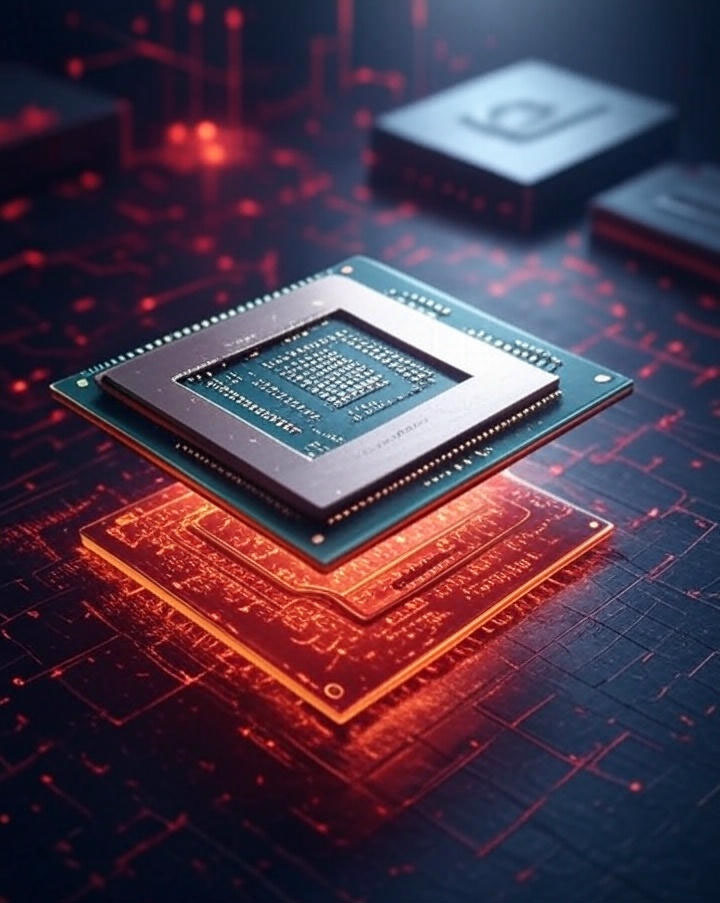Introduction
Cybersecurity threats constantly evolve, and a new, alarming challenge has surfaced: CPU-level ransomware. On May 14, 2025, Tom’s Hardware reported that Christiaan Beek, a cybersecurity expert from Rapid7, created a proof of concept (PoC) for ransomware that operates at the CPU level. This ransomware bypasses all traditional defenses, as Beek stated, overcoming “every freaking traditional technology we have out there.” Specifically, it manipulates a processor’s microcode, posing a major challenge for organizations and individuals. At Eagle Point Technology Solutions, we actively combat such threats by offering advanced cybersecurity solutions to protect our clients from sophisticated attacks. In this blog post, we’ll dive into CPU-level ransomware, explore its mechanics, and explain how Eagle Point helps safeguard your systems.
What Is CPU-Level Ransomware?
Traditional ransomware often targets software layers, locking files or systems until a ransom payment occurs. However, CPU-level ransomware, as shown in Beek’s PoC, functions at a deeper level—inside the processor’s microcode. Microcode consists of low-level instructions that control CPU operations, linking hardware and software. Attackers alter this microcode to insert malicious code directly into the processor, making it nearly impossible for conventional antivirus tools or operating system defenses to detect or remove it.
As the Tom’s Hardware article explains, Beek drew inspiration from a flaw in AMD Zen processors. This flaw allowed unauthorized microcode loading, which could disrupt encryption at the hardware level and change CPU behavior. Leveraging his firmware security expertise, Beek crafted a ransomware payload that hides within the CPU. Unlike traditional ransomware, which users can often mitigate by reinstalling the operating system or restoring backups, CPU-level ransomware persists through these actions because it resides in the processor’s firmware or microcode. Consequently, this persistence creates a “worst-case scenario,” as Beek described, since the ransomware can trigger encryption before the operating system loads, leaving antivirus tools ineffective.
The Implications of CPU-Level Ransomware
CPU-level ransomware brings serious and wide-ranging consequences. Let’s examine some key concerns:
- Bypassing Traditional Security Tools: Beek pointed out that this ransomware evades all standard security measures, such as antivirus programs, firewalls, and endpoint detection systems. Because it operates at the hardware level, it avoids software-based defenses, making detection extremely tough with current tools.
- Staying Active Across System Resets: Unlike software-based ransomware, which users can often remove by wiping the system or replacing the storage drive, CPU-level ransomware remains in the processor. This durability means that even reformatting the system or swapping the motherboard may not eliminate the threat, potentially requiring a costly CPU replacement.
- Opening Doors to Wider Exploits: Although ransomware is the focus of Beek’s PoC, manipulating CPU microcode enables other harmful activities. For instance, attackers could tweak encryption processes to produce predictable outputs, allowing them to decrypt data passing through the CPU undetected. Such capabilities might expose sensitive information, including financial data, intellectual property, and personal records.
- Shifting Threat Landscape: The Tom’s Hardware article mentions leaked 2022 chat logs from the Conti ransomware gang, which explored similar firmware-based attacks. This indicates that cybercriminals are already investigating hardware-level exploits. Therefore, Beek’s PoC may speed up their efforts. As these threats become real, organizations must prepare for a new wave of unavoidable ransomware.
Why This Matters for Organizations
CPU-level ransomware highlights a vital truth: cybersecurity now extends beyond protecting software and networks. Hardware-level threats require a broad approach that includes firmware security, hardware oversight, and proactive threat intelligence. For organizations, the risks are high. A successful CPU-level ransomware attack could cause:
- Operational Downtime: Locked systems might stop critical business processes, leading to major financial losses.
- Data Exposure: Manipulating CPU behavior could reveal sensitive data, harming customer trust and regulatory compliance.
- Reputation Harm: High-profile ransomware incidents often draw media attention, damaging an organization’s reputation and market standing.
- Financial Impact: Beyond ransom payments, organizations face costs from system recovery, hardware replacement, and legal issues.
At Eagle Point Technology Solutions, we understand that these threats demand more than standard solutions. Our team of cybersecurity experts works diligently to help organizations stay ahead of risks like CPU-level ransomware through tailored, forward-thinking strategies.
How Eagle Point Technology Solutions Can Help
At Eagle Point Technology Solutions, we provide comprehensive cybersecurity services to tackle both current and emerging threats. Although detecting CPU-level ransomware at the microcode level is currently difficult with most tools, Eagle Point focuses on proactive steps and alternative strategies to reduce the risks. Here’s how we support you:
1. Proactive Hardware Security
Since detecting microcode-level attacks is challenging, Eagle Point prioritizes proactive hardware security. We collaborate closely with CPU vendors like Intel and AMD to stay updated on vulnerabilities and microcode fixes. By ensuring your systems have the latest firmware updates, we lower the risk of exploitation through known weaknesses, such as those in Beek’s PoC.
2. Zero Trust Approach
To counter the ability of CPU-level ransomware to bypass defenses, Eagle Point adopts Zero Trust principles, ensuring no device, user, or process gains automatic trust. Our multi-layered security strategy includes advanced endpoint protection, network segmentation, and continuous authentication to shrink the attack surface and limit ransomware spread.
3. Active Patch Management
Flaws like those in AMD Zen CPUs often serve as entry points for hardware-level attacks. Eagle Point’s active patch management ensures your systems stay updated with the latest microcode fixes and security patches, closing potential gaps before attackers can exploit them.
4. Dark Web Monitoring
Cybercriminals frequently share exploit tools and stolen credentials on the dark web. Eagle Point’s dark web monitoring tracks these activities, providing early alerts about potential threats targeting your organization. As a result, we can strengthen your defenses proactively.
5. Incident Response and Recovery
If a CPU-level ransomware attack occurs, quick action is crucial. Eagle Point’s incident response team isolates affected systems, evaluates the attack’s scope, and applies recovery steps. Additionally, we guide you on hardware replacement and system restoration to reduce downtime, recognizing that CPU replacement may be necessary in some cases.
6. Cybersecurity Training
Beek noted in the Tom’s Hardware article that many ransomware breaches stem from simple security mistakes, like weak passwords or poor habits. Eagle Point offers tailored cybersecurity training to teach employees how to spot phishing attempts, secure credentials, and follow best practices.
Steps Organizations Can Take Now
While CPU-level ransomware is hard to detect due to its hidden nature, organizations can take immediate actions to strengthen their defenses:
- Work with Vendors: Partner with CPU manufacturers to stay informed about microcode vulnerabilities and apply their recommended updates quickly.
- Use Multi-Factor Authentication (MFA): MFA adds an extra security layer, lowering the risk of unauthorized access that could lead to ransomware deployment.
- Perform Regular Security Checks: Frequent checks of hardware, firmware, and software can uncover vulnerabilities before attackers exploit them.
- Secure Critical Data Backups: Keep safe, offline backups to ensure you can restore data without paying a ransom.
- Team Up with Experts: Collaborate with a trusted cybersecurity provider like Eagle Point to create a defense plan tailored to your organization’s needs.
The Future of Cybersecurity
The emergence of CPU-level ransomware serves as a clear reminder that the cybersecurity landscape keeps changing. As attackers develop new methods, defenders must adapt quickly. At Eagle Point Technology Solutions, we lead the fight against emerging threats, using our expertise and advanced tools to protect our clients.
Beek’s PoC, as featured in Tom’s Hardware, acts as a wake-up call for the industry. It stresses the need to tackle core security issues, from hardware flaws to user behavior. By focusing on proactive steps, vendor collaboration, and swift response, organizations can reduce the risks of CPU-level ransomware, even without direct detection capabilities.
Conclusion
CPU-level ransomware marks a new chapter in cybersecurity, challenging standard defenses and requiring a fresh approach to system protection. At Eagle Point Technology Solutions, we stand ready to tackle this challenge, providing the tools, expertise, and strategies to safeguard your organization. As the threat landscape shifts, we remain committed to delivering peace of mind through innovative cybersecurity solutions.
Don’t wait for the next major attack to act. Contact Eagle Point today to learn how we can help you defend against CPU-level ransomware and other emerging threats. Together, we can build a secure future for your organization.




